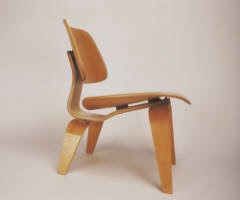Lesson 9 -- History and Genealogy Resources—Ancestry
Library, Heritage Quest and Sanborn Maps
1. Contrary to popular belief, you don't have to be dead
to be listed in AncestryLibrary and can frequently find useful
information in the U.S. Phone and Address Directories, 1993-2002. You may even
find your marriage license. Search for your own name in AncestryLibrary
and report the results.
I ran a search for my married name “Kathryn Vandel” and
maiden name “Kathryn Higdon.” Neither my married name or my married name
brought up much. The only record to come up was from a phone directory from when
I was in college.
2. In AncestryLibrary, search for a grandparent or
great-grandparent and see if you can locate them in the census. Report
your findings.
I ran a search for my paternal grandmother, Bessie
Higdon. I pulled up the first census record that came up, 1940 United States
Federal Census. My grandmother, grandfather, aunt, and father are all listed on
the record. The Census was taken on April 20, 1940. My father would have just
been born, his birthdate is March 2, 1940. Although my dad is Clifton Baxter
Higdon, Jr. he is listed simply as Baxter. The family was living in Detroit,
Wayne County, Michigan. When I pulled up the map of the area, it is no longer residential,
but part of the business district downtown.
One feature that Ancestry offers, when using the census
records, is the highlighted and transcribed text. This is great when the
handwriting is not clear and makes it much easier to find the information.
3. In AncestryLibrary, type "South
Dakota" in the location box and click Search. On the left side of the next
screen is a link for Pictures. Click Pictures, see what's there, and look
at one or more. Report your findings.
As I have said, I work as a curator at the South Dakota Cultural
Heritage Center. The Museum opened an exhibit on baseball in October 2014. I
decided it might be fun to click through some of the baseball images. I found an
image of a baseball card for Jim [James] Scott, “Death Valley Jim,” that is
identical to one that we have on display. Neat to get information on the date
of his first game (listed as 25 Apr 1909) and last game (listed as 17 Aug
1917).
I also clicked on an image of Reuel Eck and Tilda Knutson
on their wedding day from 1928. The annotation reads, “They took out their
marriage license in Peking county, S.D. They were first married at dad's
parents in Adams county, N.D. when the minister noticed they had to be married
in the county in which the license was issued. So they all drove to the state
line.” Too funny!
4. In HeritageQuest, there are over 28,000 family
and local histories in their online historical books. Search for a place
or browse the publications. Report back on something that interested you.
I looked through a history on Tippacanoe County, the
location of my college. The volume that resulted was quite massive (published
in 1909), but provided some interesting information about the area. Using a
keyword search, I found an entire chapter on Purdue University, my Alma Mater. I
found it interesting that this statement, on the school founding in the 1860’s,
still holds true today, “A long-desired want was foreshadowed, and the means appropriated
whereby that advantages of an educational system adapted to the process of
developing those elements of knowledge which especially appertain to the
agriculturist and mechanic were ultimately to be utilized.” Purdue stands, to
this day, as an engineering and agricultural university, but you can still get
a liberal arts education there too!
5. In Sanborn Maps, select South Dakota. Then
select your town or a town with which you are familiar. Choose a date. Look at
the first page containing the Index. Then navigate around the pages and see
what you discover. Try to find a building on the map that is still in use
today. Report your findings.
I started with the earliest map, from 1884. I was curious
to see how much the city has changed in over 130 years! Although it is not the
same building, it was interesting to see that there was a business labeled “club
room” at about the same location as where Bob’s Lounge is located today. I also
wonder if the “bank” listed at the corner of Pierre Street and Dakota would
have been Bankwest?
Next, I pulled up the 1903 maps. From the maps it was
obvious that the town had really expanded. More residential neighborhoods are
included and a lot more property is dedicated to the railroad. It’s also
interesting to see plots laid out where the Capitol sits today.

